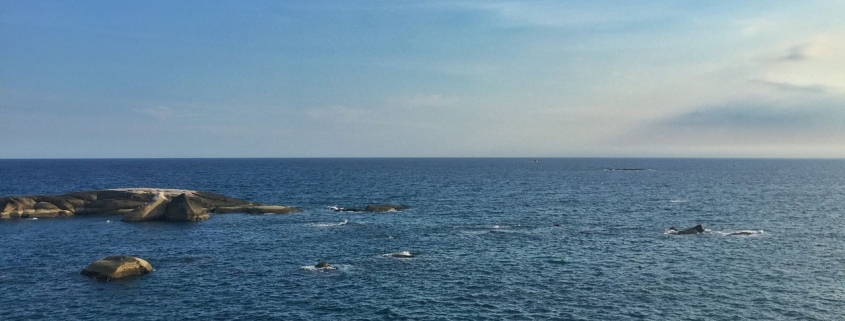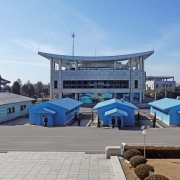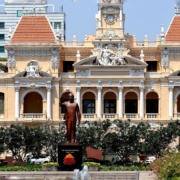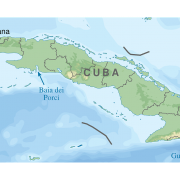What is the South China Sea dispute?
Topic of Study [For H2 History Students]:
Paper 2: Regional Conflicts and Co-operation
Source Based Case Study
Theme III Chapter 2: ASEAN (Growth and Development of ASEAN: Building regional peace and security – relations between ASEAN and external powers)
Historical Background
South China Sea dispute involves a large region of islands, reefs and banks. In particular, the region relates to contentious parts like Spratly Islands and Scarborough Shoal. The dispute originated from competing territorial claims between ASEAN-related countries (Philippines and Vietnam) and external powers, particularly China. For example, China based its territorial claims on the ‘nine dash line’ map, which was contested on by other claimants.
Unfortunately, these competing claims have resulted in clashes that occasionally escalated into violent confrontations. In January 1974, China clashed with South Vietnam over the ‘Paracels’, which resulted in the sinking of several Vietnamese ships and a substantial number of casualties. In 1988, China attacked Vietnamese forces in the Spratlys Islands, leading to frayed bilateral tensions.
Competing Claims
From the late 1970s to 1980s, Philippines advanced its claims on the Spratlys. In June 1978, Marcos announced the Presidential Decree that established the Philippine Exclusive Economic Zone (EEZ), which covered 200 nautical miles of the affected region. Likewise, in 1988, Brunei outlined an EEZ that stretched into the southern part of the Spratlys.
ASEAN’s intervention I: The Manila Declaration
On 22 July 1992, during the 25th ASEAN Ministerial Meeting (AMM), the regional organization formed the ASEAN Declaration of the South China Sea at Manila, Philippines. The Declaration was formed on the basis of the Treaty of Amity and Cooperation (TAC) of 1976, which advocated non-violent means of dispute resolution. It was a significant milestone for ASEAN as China agreed to sign the document.
However, the competing claims resurfaced again in the mid-1990s. On 8 February 1995, Philippines observed the development of a militarised Mischief Reef. In the late 1990s, Philippines clashed with China at the Mischief Reef and the Scarborough Shoal.
A divided ASEAN?
Given Philippines’ proximity to the contested region, it raised the matter to ASEAN. Yet, not all ASEAN members held a similar position regarding the dispute. This was observed in the disagreements over Philippines’ proposal for a new code-of-conduct during the AMM in July 1999. Furthermore, most countries were occupied with their domestic matters, given the severity of the Asian Financial Crisis of July 1997.
Besides, Indonesia sought to pursue an alternative solution due to the lack of unanimity in ASEAN. In 1990, Indonesia conducted the Workshops on Managing Potential Conflicts in the South China Sea. The workshop functions on a ‘two-track diplomacy’: (a) regional cooperation between ASEAN and China (b) bilateral cooperation between claimant parties
This informal diplomacy did make significant contributions to the management of disputes as China was unwilling to work with multilateral arrangements.
ASEAN’s intervention II: Declaration on the Conduct of Parties in the South China Sea (DOC)
On 4 November 2002, ASEAN promulgated another landmark agreement, which was known as the DOC at Phnom Penh, Cambodia. The document was signed by both China and ASEAN.
Contents included the reaffirmed commitment to adhere to the UN Convention on the Law of the Sea (UNCLOS), TAC and other international law. For example, “The Parties concerned undertake to resolve their territorial and jurisdictional disputes by peaceful means“.
What can we learn from this article?
Consider the following question:
– How successful was ASEAN managing the South China Sea dispute? [to be discussed in class].
In view of the above-mentioned points, you should attempt source-based case study questions to review your knowledge competency.
The H2 and H1 History Tuition feature online discussion and writing practices to enhance your knowledge application skills. Get useful study notes and clarify your doubts on the subject with the tutor. You can also follow our Telegram Channel to get useful updates.
We have other JC tuition classes, such as JC Math Tuition and JC Chemistry Tuition. For Secondary Tuition, we provide Secondary English Tuition, Secondary Math tuition, Secondary Chemistry Tuition, Social Studies Tuition, Geography, History Tuition and Secondary Economics Tuition. For Primary Tuition, we have Primary English, Math and Science Tuition. Call 9658 5789 to find out more.











